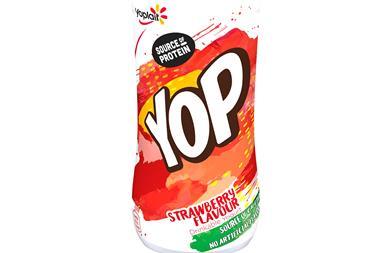Once was the time when food was eaten to satisfy hunger - and that was it. Today consumers demand that it does so much more, which is why we have seen such a spectacular rise in sales of functional foods in the past few years. According to Mintel's 2006 functional foods report, the market has grown by 143% since the year 2000 and was worth £1.1bn at the end of last year. Even better news is that Mintel forecasts the market will double by 2010.
For consumers the benefits of functional foods are easy to see: they offer 'health' in a convenient format. They are often everyday lines with an added ingredient that can't even be tasted. Mintel puts the appeal down to a 'new breed of consumer', one who is more aware of the link between diet and well-being. The report states: "While free-from and organics have grown strongly over the past five years, none have shown the spectacular uptake of functional foods. Functional foods have climbed out of the health niche and entered the mainstream."
Interestingly, Mintel reckons it is the media rather than the food industry that is dictating demand. So the health issues that are given most prominence in the news, such as blood pressure and cholesterol, are the ones consumers are most likely to want to do something about. As to who is worried about what, women have more health concerns than men. Top of the women's list is breast cancer, while men are most concerned about heart disease. And high cholesterol is important for both.
In terms of demographic profile, Mintel reports that it is the AB group that has the widest grasp of health issues and the importance of healthy eating. They are often more prepared to pay a premium for healthy convenience foods, and tend to buy into different health fads.
Dairy is the largest and best established functional food sector, accounting for 45% of sales through spreads, yogurts, yogurt drinks, soya and dairy-free products. Mintel reports that the greatest growth in value terms has been in probiotic yogurts and yogurt drinks, while juice-based drinks have also shown strong growth. The strength of these sectors is underlined by high levels of new product development, with dairy and beverages accounting for 88% of functional food launches in 2005.
Typical of many new trends is the fact that the grocery multiples are the main channel for purchase, accounting for 86% of sales, and they have cemented their role with own-label offerings. However, there is still room for c-stores to cash in.
Danone is responsible for the successful Actimel and Activia brands and the company's category strategy manager James King says: "It is clear that despite the phenomenal growth in functional dairy, most independent c-stores are failing to capitalise by not consistently stocking these lines. These products are no longer niche so we urge all convenience retailers to try listing them."
For consumers the benefits of functional foods are easy to see: they offer 'health' in a convenient format. They are often everyday lines with an added ingredient that can't even be tasted. Mintel puts the appeal down to a 'new breed of consumer', one who is more aware of the link between diet and well-being. The report states: "While free-from and organics have grown strongly over the past five years, none have shown the spectacular uptake of functional foods. Functional foods have climbed out of the health niche and entered the mainstream."
Interestingly, Mintel reckons it is the media rather than the food industry that is dictating demand. So the health issues that are given most prominence in the news, such as blood pressure and cholesterol, are the ones consumers are most likely to want to do something about. As to who is worried about what, women have more health concerns than men. Top of the women's list is breast cancer, while men are most concerned about heart disease. And high cholesterol is important for both.
In terms of demographic profile, Mintel reports that it is the AB group that has the widest grasp of health issues and the importance of healthy eating. They are often more prepared to pay a premium for healthy convenience foods, and tend to buy into different health fads.
Dairy is the largest and best established functional food sector, accounting for 45% of sales through spreads, yogurts, yogurt drinks, soya and dairy-free products. Mintel reports that the greatest growth in value terms has been in probiotic yogurts and yogurt drinks, while juice-based drinks have also shown strong growth. The strength of these sectors is underlined by high levels of new product development, with dairy and beverages accounting for 88% of functional food launches in 2005.
Typical of many new trends is the fact that the grocery multiples are the main channel for purchase, accounting for 86% of sales, and they have cemented their role with own-label offerings. However, there is still room for c-stores to cash in.
Danone is responsible for the successful Actimel and Activia brands and the company's category strategy manager James King says: "It is clear that despite the phenomenal growth in functional dairy, most independent c-stores are failing to capitalise by not consistently stocking these lines. These products are no longer niche so we urge all convenience retailers to try listing them."

























No comments yet